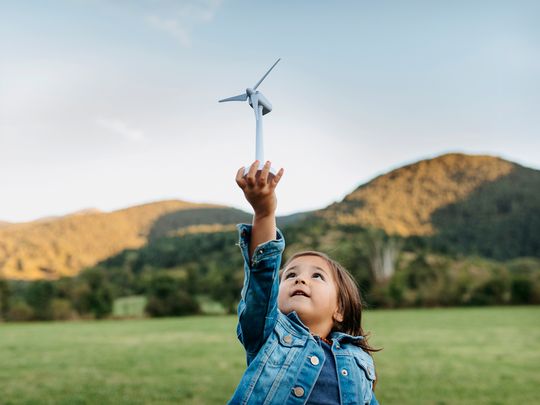
Every year, 40 million tons of electronic waste are generated by IT. That’s the equivalent of throwing away 800 laptops every second.
With action on climate change so urgently needed, attention is rightly on the environmental impacts of rapidly-expanding technology use. However, I believe the links between sustainability and technology go much further than making IT greener.
The problem and the solution
Let’s look again at some numbers.
According to analysts, IT produces around 4 per cent of global greenhouse gas emissions. That’s a significant number that we at Atos have been working hard to reduce. We’re not fast enough. But we’re making progress. At modern data centers, for example, new immersive cooling technologies can cut carbon emissions by 40 per cent. And there are many more examples.
At the same time, research by the World Economic Forum found that digital technologies have the potential to reduce around 20 per cent of the world’s carbon by 2030 across the three highest-emitting sectors.

According to analysts, IT produces around 4 per cent of global greenhouse gas emissions. That’s a significant number that we at Atos have been working hard to reduce. We’re not fast enough. But we’re making progress.
Impact versus potential
In other words, IT has a carbon reduction potential five times its current impact. That’s because innovative use of technologies and data can accelerate and improve broader sustainability outcomes.
This is something that organisations in this region are already embracing. Atos commissioned research with over 200 organizations from all over the Middle East, especially Saudi Arabia, Egypt, and UAE, to shed light on their sustainable business operations. We found that over 90 per cent of enterprises see digital transformation as both a catalyst and an enabler in advancing their sustainability goals.
A new circular economy
The ‘circular economy’ is a good example. Atos just launched a sustainable digital workplace suite, with specialist partners striving to reach the world’s first quality standard for remanufactured laptops. It is still a small step, yet it is an important one.
End-user devices collectively account for over half of the total carbon emissions of ICT. Demand for new ones is a significant drain on the earth’s resources. Manufacture alone generates around 75 per cent of the carbon footprint of a single laptop.
To address this in a sustainable workplace environment, data analytics can be leveraged to extend the lifetime of devices without impacting their performance. Devices like laptops and tablets can be remanufactured, recycled and repurposed in line with circular economy principles. This not only cuts carbon, it builds social value along the ICT supply chain through sustainable employment, digital inclusion and education.
ESG and leadership
These are benefits not just for IT departments, but for CEOs, CFOs, COOs, HR and CSR leaders, especially given the increasing emphasis on Environmental, Social and Governance (ESG) performance.
Demand for this isn’t just coming from regulators. Research shows that 78 per cent of investors want companies to prioritize ESG efforts, even if it has a negative effect on short-term profits. About 65 per cent of employees would prioritise working for an employer with a strong environmental focus. And 85 per cent of customers say they’ve shifted their buying behaviour towards sustainability in the past five years.
Turning data into action
There’s a long way to go to improve the scope and visibility of CSR reporting. One recent survey, for instance, found that while 96 per cent of EMEA companies recognise sustainability as a business factor, only 1 in 3 measure their emissions.
Again, technology can play a major role. Using powerful digital platforms, large volumes of carbon and other data can be gathered, analysed, visualised and turned into new actionable insights. These can inform businesses, citizens, governments and NGOs to take sustainability actions, from the most ordinary everyday (turning off your device) to strategic policy-making that addresses not just decarbonisation, but the crisis of biodiversity and nature loss.
Crucially, by combining big datasets with the power of AI, we’re getting better and better at sophisticated data modelling to predict events and formulate more effective responses – anything from predicting floods or firestorms, to modelling the impacts of nature-based projects.
Doing things differently, together
Returning to the research we commissioned here in the Middle East. Enterprises reported that while there are major challenges to improve sustainability, the associated benefits are clear, not least from an efficiency, resourcing and reputational perspective.
To make the difference that’s now required, collaboration is essential – between industries, between governments and commercial sectors, across continents, and between Western and Middle East partners. That’s why I was so proud recently to announce Atos’ strategic partnership with WWF, one of the world’s leading NGOs, with whom we’re supporting a range of decarbonisation and biodiversity projects around the world.
The devasting climate and weather disasters we all witnessed in 2023 are a profound call to joint action. As a global community, in cooperation, we can shape a brighter future for people and for our precious natural world.
- Nourdine Bihmane is the Deputy CEO of Atos Group and CEO of Tech Foundations



